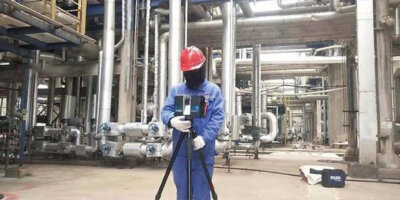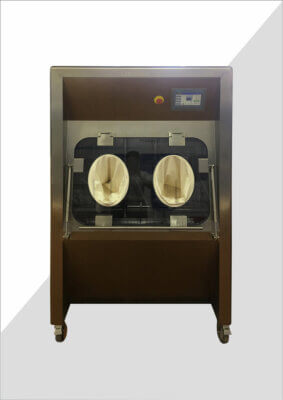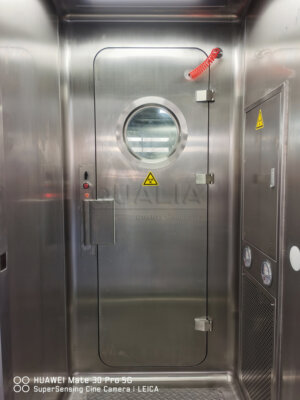In the intricate world of vaccine production, safety is paramount not only for the end product but also for the entire manufacturing process. One critical aspect often overlooked by the public eye is the management of potentially hazardous effluents generated during vaccine development and production. Effluent decontamination systems play a crucial role in ensuring that these liquid wastes are rendered safe before being released into the environment, protecting both public health and ecological balance.
The importance of effective effluent decontamination in vaccine production cannot be overstated. These systems are designed to neutralize or eliminate biological contaminants, including live viruses, bacteria, and other potentially harmful microorganisms that may be present in the waste streams. As vaccine production has ramped up globally, particularly in response to the COVID-19 pandemic, the demand for robust and reliable effluent decontamination solutions has surged, prompting innovations and advancements in this critical field.
As we delve deeper into the world of effluent decontamination systems in vaccine production, we'll explore the various technologies employed, the regulatory landscape governing their use, and the latest innovations driving the industry forward. From continuous flow systems to batch processing methods, we'll uncover the strengths and limitations of different approaches, and examine how these systems are tailored to meet the unique challenges of vaccine manufacturing facilities.
Effluent decontamination systems are a critical component in vaccine production, ensuring the safe treatment of biologically contaminated liquid waste before environmental release. These systems employ various technologies and processes to neutralize potentially harmful microorganisms, protecting public health and the environment while enabling compliant and efficient vaccine manufacturing operations.
| Technology Type | Application | Key Features | Safety Level |
|---|---|---|---|
| Continuous Flow | High-volume production | Real-time processing, Minimal storage | BSL-3, BSL-4 |
| Batch Processing | Smaller facilities | Flexibility, Complete cycle validation | BSL-2, BSL-3 |
| Thermal Treatment | All biosafety levels | High efficacy, Rapid processing | BSL-2, BSL-3, BSL-4 |
| Chemical Inactivation | Specific pathogens | Cost-effective, Customizable | BSL-2, BSL-3 |
| Filtration Systems | Adjunct treatment | Particulate removal, Water reclamation | All levels |
What are the primary types of effluent decontamination systems used in vaccine production?
Effluent decontamination systems in vaccine production come in various forms, each designed to address specific challenges and requirements of different manufacturing processes. The primary types include continuous flow systems, batch processing units, and hybrid models that combine elements of both.
Continuous flow systems are particularly well-suited for high-volume production facilities, allowing for real-time processing of effluents without the need for large storage capacities. These systems can handle a constant stream of waste, making them ideal for large-scale vaccine manufacturing operations.
Batch processing units, on the other hand, offer greater flexibility and are often preferred in smaller facilities or for specialized production runs. These systems allow for complete cycle validation and can be easily adapted to different types of effluents or varying production schedules.
The choice between continuous flow and batch processing effluent decontamination systems depends on factors such as production volume, facility size, and specific biosafety requirements. Continuous flow systems offer efficiency for high-volume operations, while batch processing provides flexibility and thorough validation for smaller or specialized production facilities.
| System Type | Processing Capacity | Validation Ease | Flexibility |
|---|---|---|---|
| Continuous Flow | High | Moderate | Low |
| Batch Processing | Low to Medium | High | High |
| Hybrid Systems | Medium to High | Moderate to High | Medium |
How do thermal treatment methods contribute to effluent decontamination in vaccine production?
Thermal treatment is a cornerstone of effluent decontamination in vaccine production, leveraging the power of heat to neutralize biological contaminants. This method is particularly effective against a wide range of microorganisms, including viruses, bacteria, and spores, making it a versatile solution for vaccine manufacturing facilities.
The principle behind thermal treatment is straightforward: by exposing the effluent to high temperatures for a specified duration, the heat denatures proteins and disrupts cellular structures, effectively inactivating or killing pathogens. This process typically involves heating the effluent to temperatures ranging from 121°C to 134°C, depending on the specific requirements and the nature of the contaminants.
One of the key advantages of thermal treatment is its reliability and efficacy across different biosafety levels. From BSL-2 to BSL-4 facilities, thermal inactivation can be tailored to meet stringent safety standards while ensuring complete decontamination of liquid waste.
Thermal treatment methods in effluent decontamination systems achieve high efficacy in pathogen inactivation by exposing liquid waste to temperatures typically between 121°C and 134°C. This approach is particularly effective for vaccine production facilities dealing with a variety of biological contaminants, offering a reliable solution across different biosafety levels.
| Temperature Range | Exposure Time | Efficacy Level | Target Pathogens |
|---|---|---|---|
| 121°C – 124°C | 15-30 minutes | High | Bacteria, Viruses |
| 125°C – 129°C | 10-20 minutes | Very High | Spores, Resistant Viruses |
| 130°C – 134°C | 5-15 minutes | Extremely High | All known pathogens |
What role do chemical inactivation methods play in effluent decontamination for vaccine production?
Chemical inactivation methods play a significant role in effluent decontamination for vaccine production, offering a complementary or alternative approach to thermal treatment. These methods involve the use of specific chemicals or disinfectants to neutralize or destroy biological contaminants present in the liquid waste.
The choice of chemical agents depends on various factors, including the types of pathogens present, the pH of the effluent, and the overall composition of the waste stream. Common chemical inactivation agents include chlorine-based compounds, peracetic acid, hydrogen peroxide, and sodium hydroxide, among others.
One of the key advantages of chemical inactivation is its ability to target specific pathogens effectively. For instance, certain chemicals may be particularly potent against enveloped viruses, while others might be more effective against bacterial spores. This specificity allows for tailored treatment approaches, potentially reducing processing times and energy consumption compared to thermal methods.
Chemical inactivation methods in effluent decontamination systems provide targeted and efficient pathogen neutralization, often with lower energy requirements compared to thermal treatments. The selection of chemical agents is critical, with options like chlorine compounds, peracetic acid, and hydrogen peroxide offering varying efficacy against different types of biological contaminants encountered in vaccine production.
| Chemical Agent | Target Pathogens | Contact Time | pH Range |
|---|---|---|---|
| Chlorine Compounds | Broad spectrum | 10-30 minutes | 6-8 |
| Peracetic Acid | Bacteria, Viruses, Spores | 5-15 minutes | 3-7 |
| Hydrogen Peroxide | Bacteria, Viruses | 20-60 minutes | 2-9 |
| Sodium Hydroxide | Prions, Resistant Pathogens | 1-2 hours | >12 |
How do filtration systems enhance the effluent decontamination process in vaccine production?
Filtration systems play a crucial role in enhancing the effluent decontamination process in vaccine production, often serving as a complementary step to thermal or chemical treatments. These systems are designed to remove particulate matter, including cellular debris and larger microorganisms, from the liquid waste stream.
The use of filtration in effluent decontamination offers several benefits. Firstly, it can significantly reduce the biological load on subsequent treatment steps, improving their efficiency and effectiveness. Secondly, filtration can help in recovering valuable materials or reducing the volume of waste that requires further processing.
Advanced filtration technologies, such as ultrafiltration and nanofiltration, can even remove smaller particles and some molecular contaminants, further purifying the effluent. These technologies are particularly useful in facilities aiming for water reclamation or those operating under strict environmental regulations.
Filtration systems in effluent decontamination for vaccine production serve as a critical pre-treatment step, reducing biological load and improving the efficiency of subsequent decontamination processes. Advanced filtration technologies like ultrafiltration and nanofiltration can significantly enhance effluent purity, facilitating potential water reclamation and ensuring compliance with stringent environmental standards.
| Filtration Type | Particle Size Removal | Application | Efficiency |
|---|---|---|---|
| Microfiltration | 0.1-10 µm | Cellular debris, Bacteria | 90-99% |
| Ultrafiltration | 0.001-0.1 µm | Viruses, Proteins | 99-99.9% |
| Nanofiltration | 0.0001-0.001 µm | Dissolved solids, Some ions | 99.9%+ |
What are the regulatory considerations for effluent decontamination systems in vaccine production?
Regulatory considerations play a pivotal role in the design, implementation, and operation of effluent decontamination systems in vaccine production. These systems must comply with a complex web of local, national, and international regulations governing biosafety, environmental protection, and pharmaceutical manufacturing practices.
One of the primary regulatory frameworks that impact effluent decontamination in vaccine production is Good Manufacturing Practice (GMP) guidelines. These guidelines ensure that pharmaceutical products, including vaccines, are consistently produced and controlled to the quality standards appropriate for their intended use. GMP regulations often dictate the need for validated decontamination processes and rigorous documentation of all waste treatment procedures.
Additionally, biosafety regulations, such as those outlined by the World Health Organization (WHO) and national health authorities, provide specific requirements for handling and treating biological waste from vaccine production facilities. These regulations often categorize waste based on biosafety levels and prescribe appropriate treatment methods for each category.
Regulatory compliance for effluent decontamination systems in vaccine production encompasses GMP guidelines, biosafety regulations, and environmental protection standards. These regulations mandate validated decontamination processes, thorough documentation, and specific treatment methods based on biosafety levels, ensuring the safe handling and disposal of biological waste from vaccine manufacturing facilities.
| Regulatory Body | Focus Area | Key Requirements | Compliance Measure |
|---|---|---|---|
| FDA/EMA | GMP | Validated processes, Documentation | Regular audits |
| WHO | Biosafety | Treatment based on BSL | Containment protocols |
| EPA | Environmental Protection | Discharge limits, Monitoring | Effluent testing |
| OSHA | Worker Safety | Exposure prevention, Training | Safety protocols |
How are effluent decontamination systems validated for effectiveness in vaccine production?
Validation of effluent decontamination systems is a critical aspect of ensuring their effectiveness and reliability in vaccine production. This process involves a series of tests and procedures designed to demonstrate that the system consistently performs as intended, effectively inactivating or removing biological contaminants from the liquid waste.
The validation process typically begins with a thorough risk assessment to identify potential biological hazards and determine the appropriate inactivation or removal targets. This is followed by the development of a validation protocol that outlines the specific tests, acceptance criteria, and documentation requirements.
One key component of validation is microbial challenge testing, where the effluent decontamination system is exposed to known concentrations of relevant microorganisms or suitable surrogates. The system's performance is then evaluated based on its ability to reduce the microbial load to acceptable levels.
Validation of effluent decontamination systems in vaccine production involves comprehensive testing protocols, including microbial challenge tests, to ensure consistent and effective pathogen inactivation. This process, guided by risk assessments and regulatory requirements, demonstrates the system's ability to meet specified reduction targets for biological contaminants, thereby ensuring the safety of treated effluents.
| Validation Step | Purpose | Methods | Acceptance Criteria |
|---|---|---|---|
| Risk Assessment | Identify hazards | Process analysis, Literature review | Comprehensive hazard list |
| Protocol Development | Define test procedures | Expert consultation, Regulatory guidance | Approved validation plan |
| Microbial Challenge | Test system efficacy | Spike testing, Surrogate organisms | Log reduction targets met |
| Process Verification | Ensure consistency | Replicate runs, Statistical analysis | Reproducible results |
What are the latest innovations in effluent decontamination technology for vaccine production?
The field of effluent decontamination in vaccine production is witnessing rapid technological advancements, driven by the need for more efficient, reliable, and environmentally friendly solutions. These innovations are reshaping the landscape of waste management in pharmaceutical manufacturing, offering new possibilities for enhanced safety and sustainability.
One of the most promising innovations is the development of advanced oxidation processes (AOPs) for effluent treatment. These technologies, which include UV/ozone systems and photocatalytic oxidation, can effectively break down complex organic compounds and inactivate a wide range of pathogens without the need for harsh chemicals or extreme temperatures.
Another area of innovation is the integration of real-time monitoring and control systems into effluent decontamination processes. These smart systems use sensors and advanced analytics to continuously monitor key parameters such as temperature, pH, and microbial load, allowing for precise control and optimization of the treatment process.
QUALIA is at the forefront of these innovations, offering cutting-edge effluent decontamination systems designed specifically for BSL-2, BSL-3, and BSL-4 liquid waste. Their solutions incorporate the latest technologies to ensure efficient and compliant waste treatment in vaccine production facilities.
Recent innovations in effluent decontamination technology for vaccine production include advanced oxidation processes and smart monitoring systems. These technologies offer enhanced pathogen inactivation capabilities, reduced chemical usage, and improved process control, contributing to more efficient and environmentally friendly waste management in pharmaceutical manufacturing.
| Innovation | Key Benefits | Application | Environmental Impact |
|---|---|---|---|
| Advanced Oxidation Processes | Broad-spectrum inactivation, Reduced chemical use | Complex organics, Resistant pathogens | Low chemical residues |
| Real-time Monitoring | Precise control, Process optimization | All decontamination systems | Improved energy efficiency |
| Membrane Bioreactors | High-quality effluent, Compact footprint | High-volume facilities | Water reclamation potential |
| Electrochemical Treatment | In-situ oxidant generation, Minimal additives | Specialized waste streams | Reduced chemical transport |
In conclusion, effluent decontamination systems play a vital role in ensuring the safety and environmental responsibility of vaccine production processes. From thermal and chemical treatments to advanced filtration and oxidation technologies, these systems employ a range of methods to effectively neutralize biological contaminants in liquid waste streams.
The importance of these systems has been further underscored by the global response to the COVID-19 pandemic, which has necessitated rapid scaling of vaccine production capabilities worldwide. As the industry continues to evolve, innovations in effluent decontamination technology are paving the way for more efficient, reliable, and sustainable waste management solutions.
Regulatory compliance remains a critical aspect of effluent decontamination in vaccine production, with stringent requirements governing the design, validation, and operation of these systems. The ongoing focus on validation and process verification ensures that these systems consistently meet the high standards required for safe and compliant vaccine manufacturing.
Looking to the future, the integration of smart technologies and advanced oxidation processes promises to further enhance the capabilities of effluent decontamination systems. These innovations, coupled with a growing emphasis on sustainability and water reclamation, are set to shape the next generation of waste management solutions in the pharmaceutical industry.
As vaccine production continues to play a crucial role in global public health, the importance of effective and reliable effluent decontamination systems cannot be overstated. These systems not only protect the environment and public health but also enable the pharmaceutical industry to meet the growing demand for vaccines safely and responsibly.
External Resources
Effluent Decontamination systems – Belgian Biosafety Server – This document discusses the use of effluent decontamination systems (EDS) in treating biologically contaminated liquid effluents from biocontainment facilities, including those involved in vaccine production.
Waste treatment of biohazardous material – Getinge – This resource focuses on the critical aspects of waste treatment in vaccine production, particularly when dealing with live viruses.
ABC Actini – Biowaste decontamination systems – ABC Actini provides information on their high-quality biowaste decontamination systems, including continuous flow systems and kill tanks, which are crucial for vaccine production.
Suncombe: Effluent Decontamination and Cleaning in Place Systems – Suncombe offers expertise in bio-waste effluent treatment, cleaning in place, and other critical processing systems for the pharmaceutical and biotechnology sectors.
BioSAFE Engineering and Kenya's National Veterinary Vaccine Production Institute – This article discusses the launch of Africa's first Alkaline Hydrolysis Effluent Decontamination Systems, a collaboration highlighting an innovative approach to effluent decontamination.
Effluent Decontamination Systems for Biopharmaceutical Facilities – Pharmaceutical Technology – This resource provides an overview of the different types of effluent decontamination systems used in biopharmaceutical facilities, including those involved in vaccine production.
- Biocontainment and Effluent Treatment in Vaccine Manufacturing – BioProcess International – This resource delves into the biocontainment measures and effluent treatment protocols necessary for vaccine manufacturing.
Related Contents:
- Safeguarding Health: Advanced Effluent Decontamination Systems
- Safeguarding Vaccines: Advanced Effluent Decontamination Systems
- Thermal Treatment: Revolutionizing Effluent Decontamination Systems
- Thermal Effluent Decontamination: Protecting Our Environment
- Enhancing Safety in Vaccine Production: The Role of EDS
- Effluent Decontamination Systems for Biosafety Laboratories
- Effluent Decontamination: Essential for High-Risk Labs
- Streamlining Effluent Decontamination: Continuous vs. Batch Processing
- Effluent Decontamination: Ensuring Pharmaceutical Safety






























